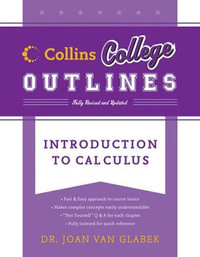
eTEXT
Vector Control of Induction Machines
Desensitisation and Optimisation Through Fuzzy Logic
By: Benoît Robyns, Bruno Francois, Philippe Degobert, Jean Paul Hautier
eText | 4 February 2012
At a Glance
eText
$239.00
or
Instant online reading in your Booktopia eTextbook Library *
Read online on
Desktop
Tablet
Mobile
Not downloadable to your eReader or an app
Why choose an eTextbook?
Instant Access *
Purchase and read your book immediately
Read Aloud
Listen and follow along as Bookshelf reads to you
Study Tools
Built-in study tools like highlights and more
* eTextbooks are not downloadable to your eReader or an app and can be accessed via web browsers only. You must be connected to the internet and have no technical issues with your device or browser that could prevent the eTextbook from operating.
ISBN: 9780857299017
ISBN-10: 0857299018
Series: Power Systems
Published: 4th February 2012
Format: ePUB
Language: English
Publisher: Springer Nature
You Can Find This eBook In
Non-FictionEngineering & TechnologyTechnology in GeneralEngineering in GeneralMechanical Engineering & MaterialsMechanical EngineeringEnergy Technology & EngineeringElectrical EngineeringComputing & I.T.Graphical & Digital Media Applications3D Graphics & ModellingElectronics & Communications Engineering
This product is categorised by
- Non-FictionEngineering & TechnologyTechnology in GeneralEngineering in General
- Non-FictionEngineering & TechnologyMechanical Engineering & MaterialsMechanical Engineering
- Non-FictionEngineering & TechnologyEnergy Technology & EngineeringElectrical Engineering
- Non-FictionComputing & I.T.Graphical & Digital Media Applications3D Graphics & Modelling
- Non-FictionEngineering & TechnologyElectronics & Communications EngineeringElectronics EngineeringAutomatic Control Engineering
- Non-FictionReference, Information & Interdisciplinary SubjectsResearch & InformationInformation theoryCybernetics & Systems Theory
- Non-FictionMathematicsApplied MathematicsMathematical Modelling
- Non-FictionLibrary & Info SciencesLibrary & Information Services
- Non-FictionEngineering & TechnologyTechnology in GeneralMaths for Engineers























